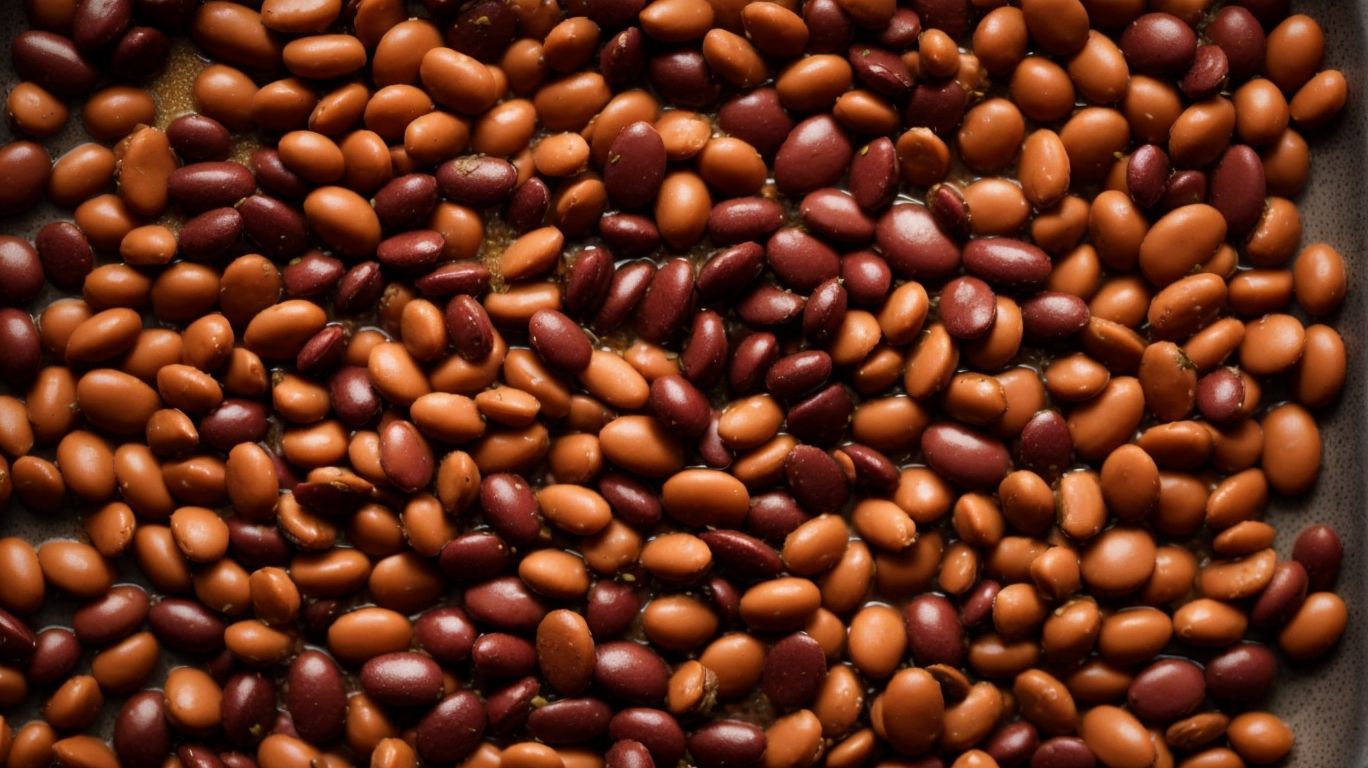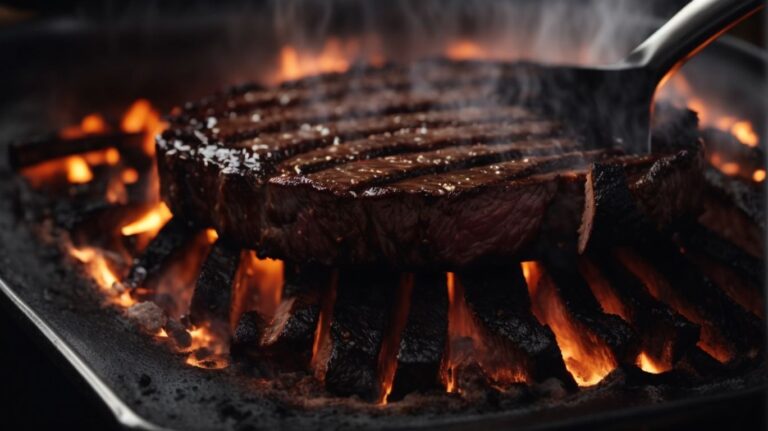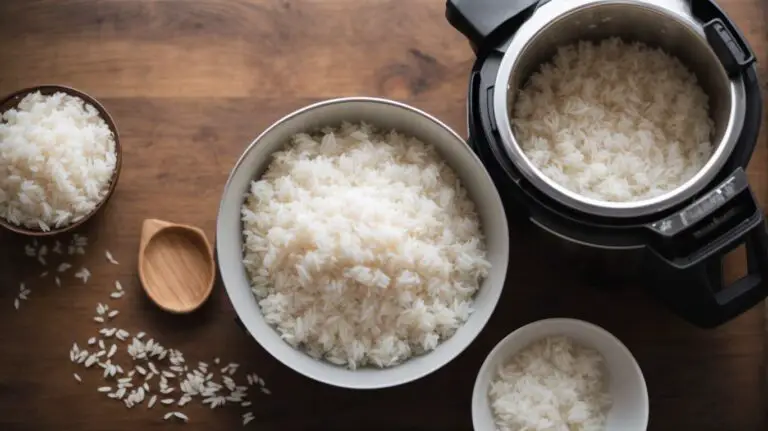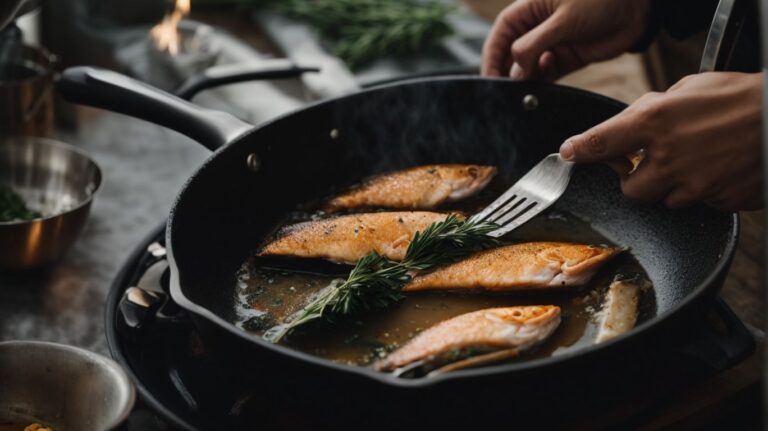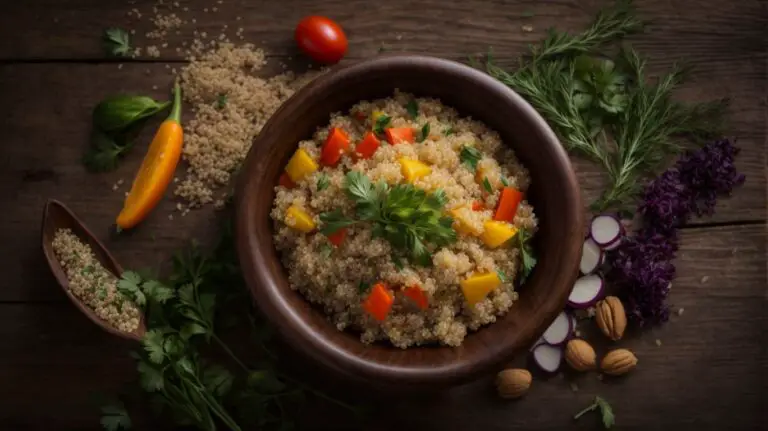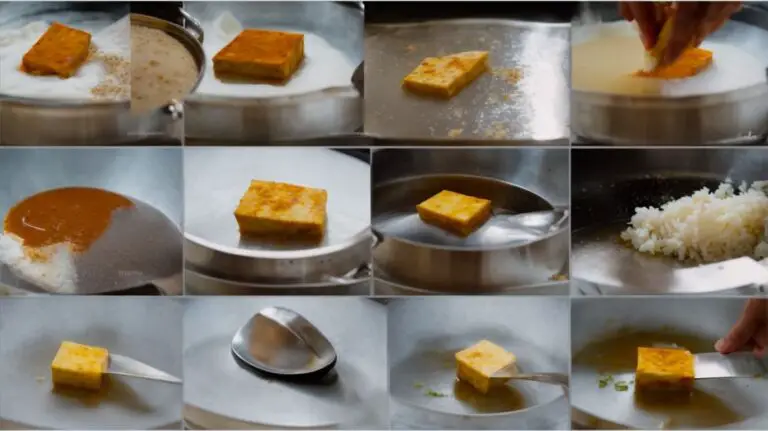How to Cook Beans Without Soaking?
Are you tired of waiting hours for beans to soak before cooking them?
We explore the reasons why soaking beans is necessary, what happens if you skip this step, and most importantly, how to cook beans without soaking them.
From using a pressure cooker to boiling the beans or even using a slow cooker, we provide you with easy and efficient methods to cook beans without the soaking process.
Stay tuned for some helpful tips and delicious recipes that you can try out today!
Key Takeaways:
Why Soak Beans Before Cooking?
Soaking beans before cooking is a common practice that helps soften the beans, reducing their cooking time and improving their texture and flavor.
Soaking beans can also aid in minimizing the gas-producing compounds, making them easier on the digestive system. By rehydrating the beans, you not only enhance their nutritional value but also promote even cooking throughout. Overnight soaking is a popular method, involving letting beans sit submerged in water for an extended period, typically 8-12 hours.
- Quick soaking
- , which entails boiling beans briefly before allowing them to soak for an hour, is another efficient technique that expedites the cooking process.
What Happens If You Don’t Soak Beans?
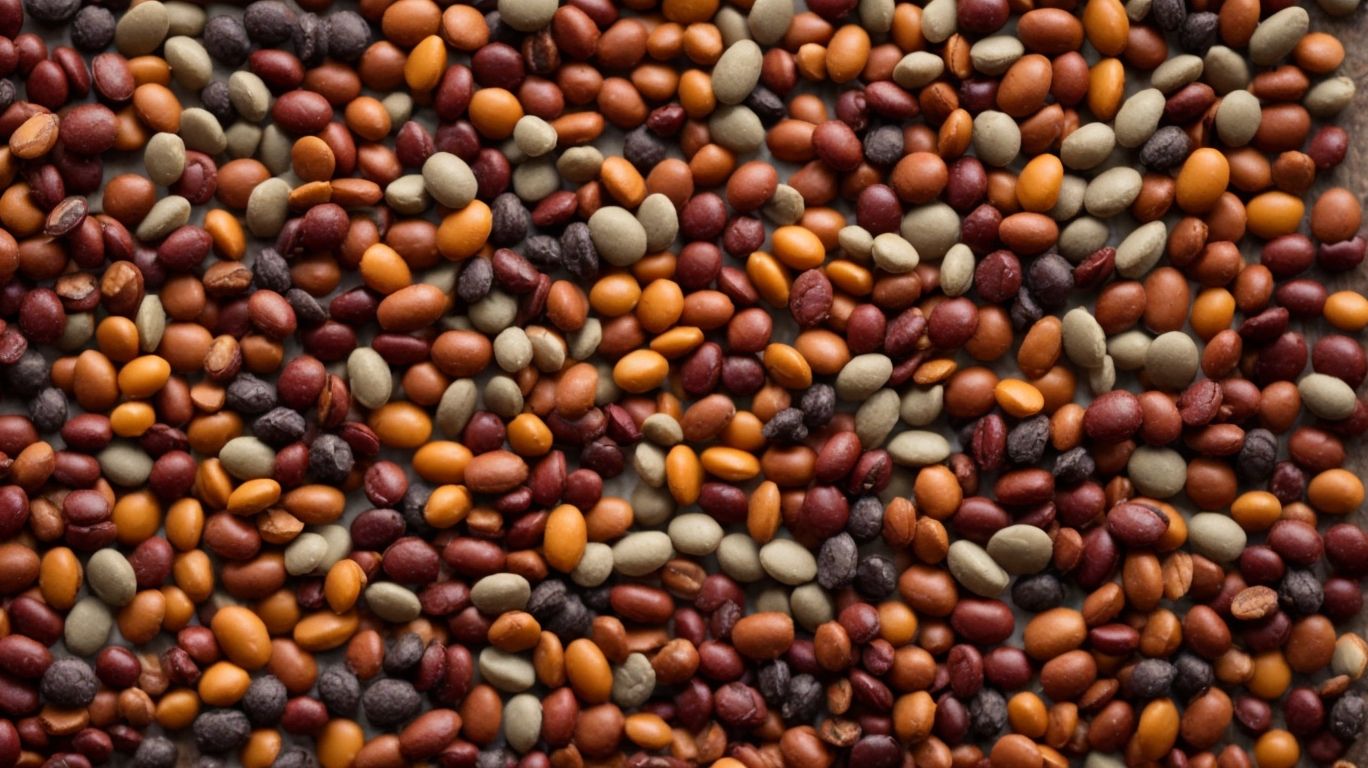
Credits: Poormet.Com – Christian Brown
Not soaking beans before cooking can result in longer cooking times, firmer beans, and potentially less flavorful outcomes.
When beans are not soaked prior to cooking, they require more time on the stove to soften, as the process of soaking helps break down the tough outer skin and reduces overall cooking time. This can lead to beans turning out firmer than desired, affecting the overall texture of the dish.
Skipping the soaking step can result in a less flavorful end result. Soaking beans not only helps them cook more evenly but also enhances their inherent taste by allowing them to absorb seasonings and flavors more effectively during the cooking process.
How To Cook Beans Without Soaking?
Cooking beans without soaking is possible through various methods that involve adjusting cooking times, temperatures, and seasoning to achieve desired results.
One popular method for cooking beans without soaking is pressure cooking. By utilizing a pressure cooker, you can significantly reduce the cooking time while still achieving tender beans.
Simply add the beans, water, and seasonings to the pressure cooker, seal it, and cook according to the instructions. Another option is boiling beans without soaking. This method involves bringing the beans to a boil, then reducing the heat and simmering until they are soft.
Slow cooking is another technique where beans can be cooked over a low heat for several hours, resulting in a creamy texture. Similarly, using a Dutch oven for bean cooking allows for a slow, gentle heat that yields deliciously cooked beans.
Using a Pressure Cooker
Utilizing a pressure cooker for cooking beans without soaking can significantly reduce the cooking time while ensuring that the beans reach a desired tenderness.
When cooking beans without soaking in a pressure cooker, it is important to add enough water to cover the beans completely, alongside seasonings such as salt, herbs, or spices to enhance the flavor profile. The high pressure and heat generated inside the cooker help break down the tough fibers in the beans efficiently, resulting in a creamy and tender texture.
Typically, most beans like black beans, chickpeas, or kidney beans can be cooked in a pressure cooker for around 20-30 minutes, depending on the desired doneness. This method not only saves time but also helps to retain more nutrients compared to traditional stovetop cooking.
Boiling the Beans
Boiling beans without soaking is a traditional method where beans are simmered in water until they reach the desired softness.
Contrary to the popular belief that presoaking beans aids in digestion and reduces cooking time, boiling beans without soaking can be a time-saving and flavorful alternative. To achieve this, ensure the water level is ample to cover the beans completely in the pot. The simmering time varies depending on the type of beans; for instance, chickpeas might take longer than lentils to soften. Adjusting the heat and keeping the lid partially covered can help regulate the cooking process and prevent the beans from boiling over. By adding herbs, spices, or vegetables during the boiling process, you can infuse the beans with additional layers of flavor.
Using a Slow Cooker
Slow cookers offer a convenient way to prepare beans without soaking, allowing for a hands-off approach to achieving tender and flavorful results.
When using a slow cooker to make beans, you can simply add the dried beans along with any desired seasonings, broth, or vegetables, set it to cook on low, and let it work its magic over several hours. The extended cooking time ensures that the beans soften gradually, absorbing the flavors of the ingredients, resulting in a rich and delicious dish.
Not only does this method save time by eliminating the need for pre-soaking beans, but it also enhances the overall taste profile due to the slow infusion of flavors during the cooking process. This makes the entire cooking experience effortlessly satisfying and ideal for busy individuals looking to enjoy a hearty meal without the hassle of constant monitoring.
Using a Dutch Oven
Cooking beans in a Dutch oven without soaking involves slow braising the beans in flavorful liquids until they become tender and infused with rich flavors.
With this method, you can start by sautéing aromatics like onions, garlic, and spices in the Dutch oven to build a robust flavor base. Once the aromatics are fragrant, add the dry beans and cover them with broth, water, or a combination of both. Bring the liquid to a simmer, then reduce the heat to low and cover the Dutch oven.
The slow braise allows the beans to gradually absorb the liquid and seasonings, resulting in a creamy texture and depth of taste. So, instead of pre-soaking the beans, you let them cook low and slow until they reach the desired tenderness.
What Are The Tips For Cooking Beans Without Soaking?
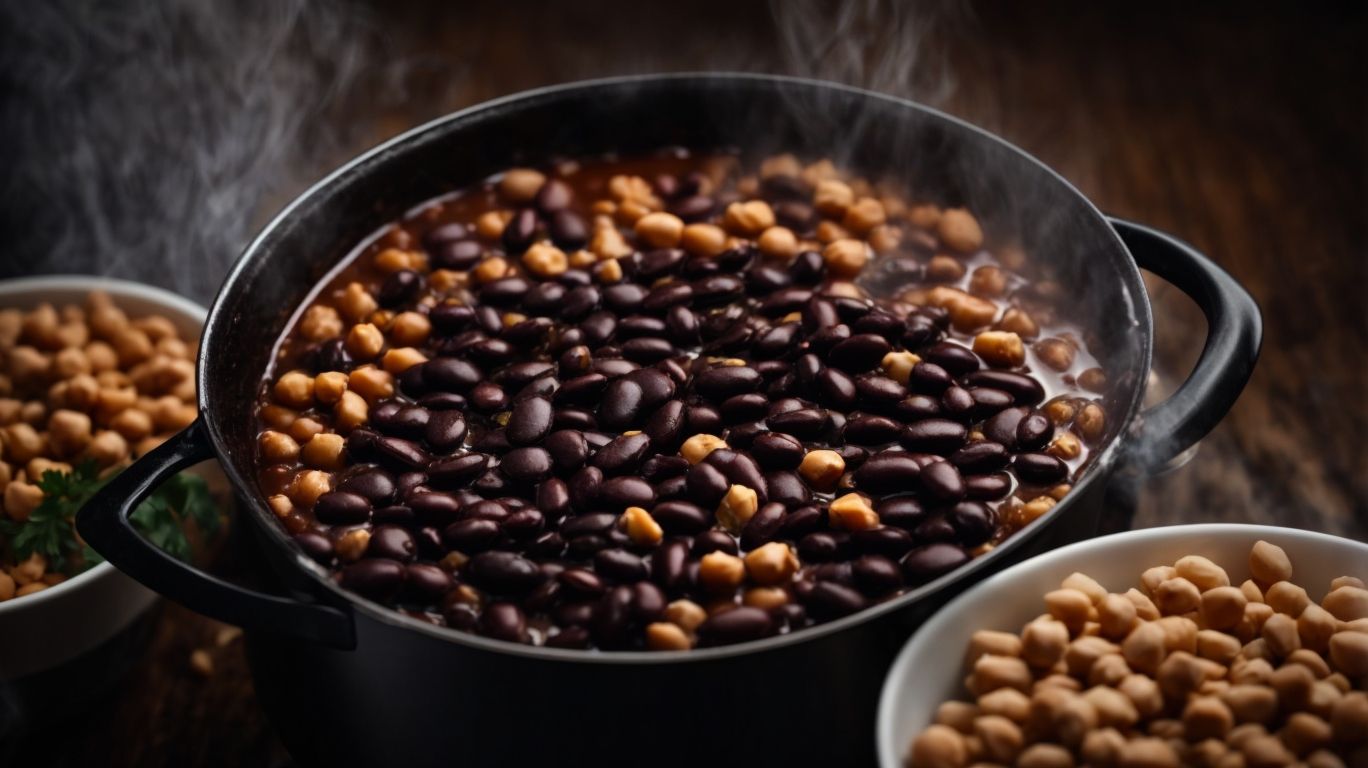
Credits: Poormet.Com – Harold Davis
When cooking beans without soaking, it’s important to rinse the beans, use fresh ingredients, and incorporate acidic elements and spices for enhanced flavor.
If you’re short on time but still craving a hearty bean dish, there are several techniques you can adopt to achieve delicious results. Starting with rinsing the beans under cold water to remove any debris is a crucial first step. Utilizing fresh ingredients such as garlic, onions, and herbs can elevate the taste profile immensely. Adding a splash of citrus juice or vinegar can not only tenderize the beans but also brighten the overall dish. Experimenting with aromatic spices like cumin, paprika, or chili flakes can further enhance the depth of flavors in your bean recipe.
Rinse the Beans Before Cooking
Rinsing beans before cooking helps remove impurities and reduces the likelihood of digestive discomfort after consumption.
Rinsing beans also plays a significant role in enhancing the overall flavor profile of the dish you are preparing. By washing away dirt, debris, and residual chemicals that might be present on the beans, you are ensuring a cleaner base for your meals. This simple step before cooking can greatly improve the taste and quality of your bean-based dishes.
Proper rinsing can aid in softening the beans and reducing the cooking time needed. This not only saves time but also helps in better nutrient retention during the cooking process. Maintaining good hygiene practices throughout food preparation is crucial for ensuring the safety and health of those consuming the meal.
Use Fresh Beans
Opting for fresh beans when cooking without soaking can enhance the overall taste and texture of the dish.
Using fresh beans means they retain their natural moisture content, which contributes to a creamier consistency when cooked in soups or stews.
The vibrant color of fresh beans also adds an appealing aesthetic to your dishes, making them visually enticing.
Cooking times are often reduced when using fresh beans, as they tend to soften quicker than dried varieties, saving you precious time in the kitchen.
Fresh beans are packed with essential nutrients such as vitamins, minerals, and fiber, providing a healthy boost to your meals.
Add Acidic Ingredients
Incorporating acidic ingredients such as tomatoes, vinegar, or citrus juices can help tenderize beans and add a bright, tangy flavor to the dish.
These acidic components play a crucial role in breaking down the tough fibers of beans, making them more palatable and easier to digest without the need for soaking.
Not only do they enhance the overall flavor profile, but they also contribute to the textural transformation of beans, creating a creamy consistency in dishes like chili or bean soups.
The addition of acidic elements during cooking can lead to quicker cooking times and improve the final color and appearance of bean-based dishes.
Cook at a Higher Temperature
Cooking beans at a higher temperature when not soaking can expedite the cooking process and help achieve a desired tenderness faster.
When beans are subjected to higher temperatures without the pre-soaking step, their cellular structure reacts differently to the intense heat levels. This leads to a quicker breakdown of the beans, reducing the overall cooking time significantly. The beans may also undergo notable texture changes when exposed to elevated heat, potentially resulting in a creamier consistency compared to traditionally soaked beans.
The intensified heat application can enhance the flavor development of the beans, as the Maillard reaction occurs more rapidly, creating complex and rich taste profiles in a shorter time frame. It is imperative to monitor the cooking process closely to prevent overcooking and preserve the desired texture and flavor balance.
Cook for a Longer Time
Extending the cooking time when not soaking beans allows for a gradual softening process and deep infusion of flavors in the dish.
Slow cooking unsoaked beans not only helps them achieve the desired tenderness but also enhances the overall taste profile of the dish. By simmering the beans over a prolonged period, the natural sugars in the beans caramelize, resulting in a rich, developed flavor. Texture enhancements are another benefit of slow cooking unsoaked beans, as the extended cooking time allows the beans to break down gently, creating a creamy consistency that adds a velvety smoothness to the dish. This method of cooking also enables the beans to absorb the flavors of other ingredients, resulting in a harmonious melding of tastes in every bite.
What Are The Best Beans To Cook Without Soaking?
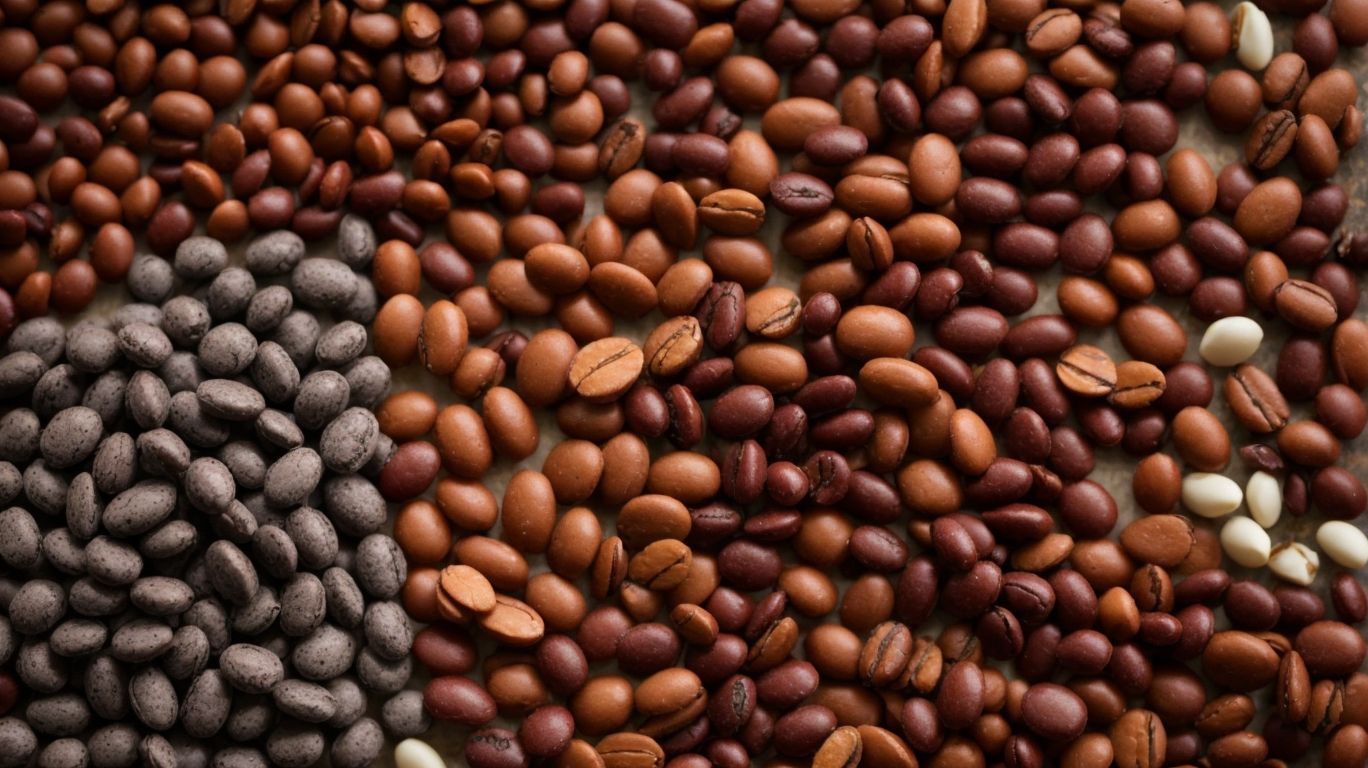
Credits: Poormet.Com – Michael Taylor
Certain beans like Pinto beans are well-suited for cooking without soaking due to their relatively quick cooking times and creamy texture when prepared correctly.
Another bean variety that works well without presoaking is the black bean. Black beans have a rich, earthy flavor and hold their shape well, making them perfect for soups, salads, and side dishes. They cook relatively quickly compared to other beans, typically in around 45 minutes to an hour.
Along with Pinto and black beans, garbanzo beans, also known as chickpeas, are a versatile option for cooking without soaking. They have a nutty taste and are commonly used in Mediterranean and Middle Eastern cuisine. When cooked, garbanzo beans have a firm texture that holds up well in dishes like hummus, stews, and curries.
What Are Some Recipes That Use Unsoaked Beans?
There are numerous delicious recipes that utilize unsoaked beans, such as black bean soup, red beans and rice, refried beans, and creamy bean dishes that showcase the versatility of beans in various cuisines.
Black bean soup, a classic in Latin American cuisine, combines unsoaked black beans with aromatic vegetables and spices to create a hearty and flavorful dish.
Red beans and rice, popular in the Southern United States, features unsoaked red beans cooked until tender, then mixed with savory seasonings and served over fluffy rice.
Refried beans, a staple in Mexican cuisine, are made by mashing unsoaked pinto beans and frying them with onions, garlic, and spices for a rich and creamy texture.
Black Bean Soup
Black bean soup is a flavorful and hearty dish that can be prepared using unsoaked beans, showcasing rich flavors and aromatic spices.
When making black bean soup without soaking the beans, it’s important to start by rinsing the beans thoroughly to remove any dirt or impurities. In a large pot, sauté diced onions, garlic, and bell peppers in olive oil until fragrant. Add in the unsoaked black beans, vegetable broth, diced tomatoes, and a bay leaf for added depth of flavor. Season with cumin, paprika, and a touch of coriander to enhance the taste profile. Let the soup simmer gently for about an hour, or until the beans are tender.
Before serving, you can adjust the seasoning with salt and black pepper to taste. A squeeze of fresh lime juice and a sprinkle of chopped cilantro can brighten up the flavors. Garnish the black bean soup with a dollop of sour cream or Greek yogurt for a creamy finish. To add some extra texture, consider topping it with crispy tortilla strips or avocado slices. Enjoy this hearty black bean soup with a side of warm cornbread or a crisp green salad for a wholesome meal that is both satisfying and nutritious.
Red Beans and Rice
Red beans and rice is a classic comfort dish that can be crafted using unsoaked beans, offering a blend of savory flavors and aromatic spices.
Key ingredients for this dish include red kidney beans, long-grain white rice, smoked sausage or ham hock, onions, bell peppers, and celery. To season the dish, you can use a mix of Cajun spices such as paprika, cayenne pepper, thyme, and bay leaves, creating a rich flavor profile.
When preparing this dish, start by sautéing the sausage or ham hock along with the aromatic trio of onions, bell peppers, and celery. Add the unsoaked red kidney beans and rice to the pot, followed by water or chicken broth. Let the mixture simmer until the beans are tender and the rice is cooked through.
Refried Beans
Refried beans are a creamy and indulgent side dish that can be made using unsoaked beans, offering a rich and satisfying accompaniment to various meals.
When preparing refried beans without soaking, start by cooking dry pinto or black beans in a pot with water until they are tender. Once the beans are cooked, drain any excess liquid and mash them gently using a potato masher for a chunkier texture. To enhance the flavor, sauté onions, garlic, and jalapeños in a skillet with a splash of olive oil before adding the mashed beans. Season the mixture with cumin, chili powder, and a pinch of salt to taste.
Cook the beans in the skillet, stirring occasionally, until they thicken and develop a creamy consistency. For extra creaminess, you can add a dollop of lard or vegetable oil. Serve the refried beans hot, garnished with fresh cilantro and a squeeze of lime juice. These flavorful beans complement Mexican dishes like tacos, burritos, or as a tasty side dish alongside rice and grilled meats.
White Bean and Kale Soup
White bean and kale soup is a nutritious and comforting dish that can be cooked using unsoaked beans, featuring a blend of hearty beans, fresh kale, and flavorful broth.
Along with being delicious, this soup is also packed with nutritional benefits. White beans are a great source of protein and fiber, while kale is loaded with vitamins A, C, and K. The broth infuses all these ingredients with savory richness, making it a wholesome meal option.
To prepare this hearty and healthy soup, start by sautéing onions, carrots, and celery in olive oil until softened. Add vegetable broth, diced tomatoes, and cannellini beans. Simmer until the beans are tender, then stir in chopped kale and let it wilt slightly before seasoning with salt, pepper, and a pinch of red pepper flakes for a hint of heat.
Chickpea Curry
Chickpea curry is a fragrant and satisfying dish that can be made using unsoaked chickpeas, offering a blend of aromatic spices and flavorful curry sauce.
When preparing a chickpea curry without soaking the chickpeas, you can enhance the flavors by starting with a base of onion, garlic, and ginger sautéed in oil until aromatic. To elevate the dish, consider adding garam masala, ground cumin, and coriander powder to create a rich spice blend. Tomatoes and coconut milk can be incorporated to impart a creamy texture.
For a variation, you can experiment with different curry bases such as coconut curry, tomato-based curry, or even yogurt-based curry. Each variation adds a unique twist to the dish, allowing you to customize the flavors based on your preferences.
Frequently Asked Questions
1. How to Cook Beans Without Soaking?
There are a few key methods you can use to cook beans without soaking, including using a pressure cooker, pre-soaking for a shorter time, or using the quick soak method.
2. Can I cook beans without soaking them beforehand?
Absolutely! While soaking is a common practice, it is not necessary for cooking beans. There are other methods you can use to achieve perfectly cooked beans without soaking.
3. What is the quick soak method for cooking beans?
The quick soak method involves bringing the beans to a boil for a few minutes, then letting them soak off the heat for about an hour before cooking. This method can significantly reduce soaking time.
4. How long does it take to cook beans without soaking?
Depending on the method you use, cooking beans without soaking can take anywhere from 30 minutes to 2 hours. The quick soak method is the fastest, while cooking in a pressure cooker can significantly reduce cooking time as well.
5. Can I use canned beans instead of cooking them without soaking?
Canned beans are a great alternative if you don’t have time to soak or cook dried beans. However, cooking beans from scratch without soaking can result in a better texture and flavor.
6. Are there any benefits to cooking beans without soaking?
Yes, there are a few benefits to cooking beans without soaking. It can save time, result in a more flavorful and textured bean, and also reduce the gas-producing compounds found in beans.

